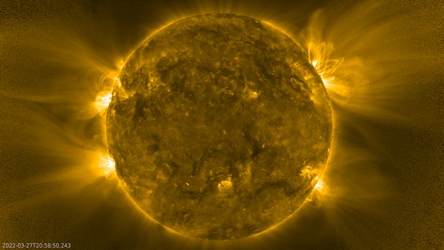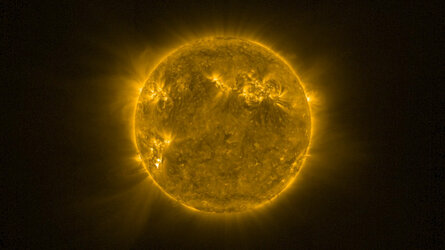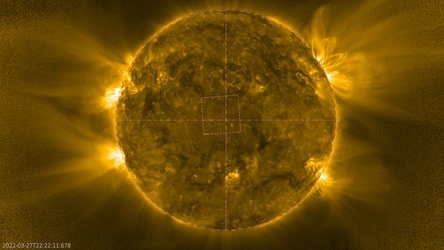Accept all cookies Accept only essential cookies See our Cookie Notice

About ESA
The European Space Agency (ESA) is Europe’s gateway to space. Its mission is to shape the development of Europe’s space capability and ensure that investment in space continues to deliver benefits to the citizens of Europe and the world.
Highlights
ESA - United space in Europe
This is ESA ESA facts Member States & Cooperating States Funding Director General Top management For Member State Delegations European vision European Space Policy ESA & EU Space Councils Responsibility & Sustainability Annual Report Calendar of meetings Corporate newsEstablishments & sites
ESA Headquarters ESA ESTEC ESA ESOC ESA ESRIN ESA EAC ESA ESAC Europe's Spaceport ESA ESEC ESA ECSAT Brussels Office Washington OfficeWorking with ESA
Business with ESA ESA Commercialisation Gateway Law at ESA Careers Cyber resilience at ESA IT at ESA Newsroom Partnerships Merchandising Licence Education Open Space Innovation Platform Integrity and Reporting Administrative Tribunal Health and SafetyMore about ESA
History ESA Historical Archives Exhibitions Publications Art & Culture ESA Merchandise Kids Diversity ESA Brand Centre ESA ChampionsLatest
Space in Member States
Find out more about space activities in our 23 Member States, and understand how ESA works together with their national agencies, institutions and organisations.
Science & Exploration
Exploring our Solar System and unlocking the secrets of the Universe
Go to topicAstronauts
Missions
Juice Euclid Webb Solar Orbiter BepiColombo Gaia ExoMars Cheops Exoplanet missions More missionsActivities
International Space Station Orion service module Gateway Concordia Caves & Pangaea BenefitsLatest
Space Safety
Protecting life and infrastructure on Earth and in orbit
Go to topicAsteroids
Asteroids and Planetary Defence Asteroid danger explained Flyeye telescope: asteroid detection Hera mission: asteroid deflection Near-Earth Object Coordination CentreSpace junk
About space debris Space debris by the numbers Space Environment Report In space refuelling, refurbishing and removingSafety from space
Clean Space ecodesign Zero Debris Technologies Space for Earth Supporting Sustainable DevelopmentApplications
Using space to benefit citizens and meet future challenges on Earth
Go to topicObserving the Earth
Observing the Earth Future EO Copernicus Meteorology Space for our climate Satellite missionsCommercialisation
ESA Commercialisation Gateway Open Space Innovation Platform Business Incubation ESA Space SolutionsLatest
Enabling & Support
Making space accessible and developing the technologies for the future
Go to topicBuilding missions
Space Engineering and Technology Test centre Laboratories Concurrent Design Facility Preparing for the future Shaping the Future Discovery and Preparation Advanced Concepts TeamSpace transportation
Space Transportation Ariane Vega Space Rider Future space transportation Boost! Europe's Spaceport Launches from Europe's Spaceport from 2012Latest
Solar Orbiter’s first close approach to the Sun
Thank you for liking
You have already liked this page, you can only like it once!
On June 15 2020, ESA’s new Sun-explorer Solar Orbiter reached its first perihelion, the point on its orbit closest to the Sun.
The spacecraft got as close as 77 million kilometres to the star’s surface during this perihelion, about half the distance between Earth and the star.
All of the spacecraft’s ten scientific instruments were on during the week around the closest approach, measuring properties of the surrounding environment, such as the magnetic field and the solar wind, but also taking close-up images of the Sun’s surface.
No other spacecraft before had taken closer images of the Sun, even though NASA’s Parker Solar Probe, launched in 2018, makes closer approaches. The spacecraft, however, doesn’t carry instruments capable of looking directly at the Sun. Ground-based telescopes can obtain higher resolution images, but due to the effects of Earth’s atmosphere cannot capture the entire solar spectrum.
The first perihelion also marked the end of Solar Orbiter’s commissioning phase and the beginning of the cruise phase, which will last until late 2021. During the science phase that follows, the spacecraft will get as close as 42 million kilometres to the Sun’s surface, closer than the planet Mercury.
The spacecraft’s operators will then use the gravity of Venus to shift Solar orbiter’s orbit out of the ecliptic plane, in which the planets of the Solar System orbit, to enable the telescopes to get the first ever proper views of the Sun’s poles. Studying the activity in the polar regions will help the scientists to better understand the behaviour of the Sun’s magnetic field, which drives the creation of the solar wind that in turn affects the environment of the entire Solar System.
-
CREDIT
ESA/MediaLab -
LICENCE
ESA Standard Licence
-
Closed captions available Captions and subtitles are available (automatically generated by YouTube) - select your language using the YouTube player controls. A non-YouTube version is available using the 'download' button above.
-
Animation
-
-
-
-

Solar Orbiter at perihelion – 26 March 2022

To the Sun and back

To the Sun and back

Zooming into the Sun at perihelion















 Germany
Germany
 Austria
Austria
 Belgium
Belgium
 Denmark
Denmark
 Spain
Spain
 Estonia
Estonia
 Finland
Finland
 France
France
 Greece
Greece
 Hungary
Hungary
 Ireland
Ireland
 Italy
Italy
 Luxembourg
Luxembourg
 Norway
Norway
 The Netherlands
The Netherlands
 Poland
Poland
 Portugal
Portugal
 Czechia
Czechia
 Romania
Romania
 United Kingdom
United Kingdom
 Slovenia
Slovenia
 Sweden
Sweden
 Switzerland
Switzerland



























